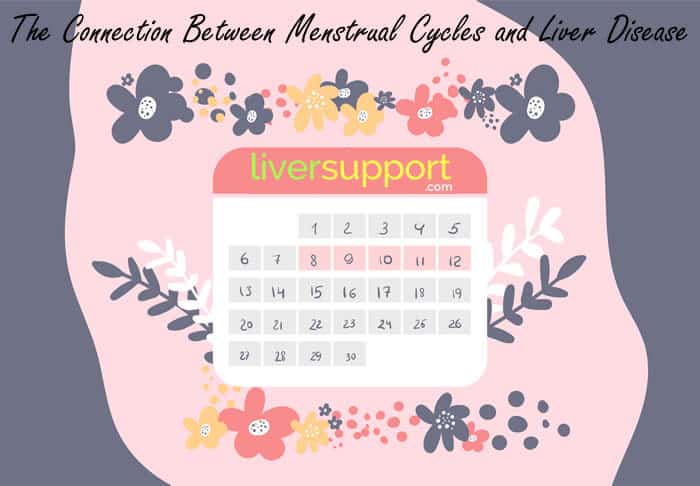
Previous
Boost Your Liver's Health with a Post-Winter Detox

Next
Can Kisspeptin Help Treat NAFLD?
The Connection Between Menstrual Cycles and Liver Disease
Do you have long or irregular periods? You may want to check your liver health if your menstrual cycles are atypical.
Menstrual cycles can vary from one woman to another in terms of length, flow, and more. If your periods are longer than typical or irregular in some way, it could just be the way that your body normally functions.
But one new study suggests that these may also be signs that you have a higher risk of liver disease.
Menstrual Cycles and Liver Disease
On March 3, 2022, The Journal of Clinical Endocrinology & Metabolism published a study involving 72,092 women under the age of 40. The participants were assessed in terms of the length and regularity of their menstrual cycles, also receiving an abdominal ultrasound to identify the presence or absence of non-alcoholic fatty liver disease (NAFLD).
After analyzing the data, researchers found that 7.1% of the 27.7% of women with menstrual cycles of 40 days or more and/or cycles that were too irregular to estimate had NAFLD. After roughly four years, NAFLD was present in 8.9% of the study subjects.
This caused the researchers to conclude that young, premenopausal women with long or irregular periods may have an elevated risk of NAFLD. (1)
New Discovery or Confirmation of Past Research?

While this was a newly released study, it isn’t the first time that researchers have connected menstrual cycles with liver disease.
For example, a 2019 study in the Canadian Journal of Gastroenterology and Hepatology reported that whether a woman was still having menstrual periods, transitioning into menopause, or postmenopausal may also impact her risk of NAFLD.
Specifically, this study found that the prevalence of NAFLD was highest for postmenopausal women at 49.14%, potentially due to having higher levels of serum uric acid. This was followed by women transitioning into menopause (33.7%), then women still having their menstrual cycles (24.21%). (2)
A 2021 study in Clinical Gastroenterology and Hepatology adds that the age at which a female starts having her periods may have an effect on NAFLD as well. This piece of research found that women starting their periods (menarche) at a younger age have a higher risk of NAFLD than those who start having their menstrual cycles when they are a bit older.
It also noted that the risk of NAFLD is also higher for women who:
- have given birth to at least one child
- women who’ve had a hysterectomy
- and women who’ve had one or both ovaries removed. (3)
What Does All This Mean?
Does this mean that you have NAFLD if you have long or irregular periods—or if you are postmenopausal, started having periods when you were younger, have given birth, had a hysterectomy, or had one or both ovaries removed? Not necessarily.
What studies like this suggest is that any of these factors could potentially increase your risk of NAFLD. Therefore, you may benefit from asking your healthcare provider to test your liver function to know for sure.
Being aware of other risk factors associated with this liver disease is helpful as well.
They include having:
- high cholesterol
- high triglyceride levels
- or being obese.
Being diagnosed with type 2 diabetes, polycystic ovary syndrome, sleep apnea, metabolic syndrome, or an underactive thyroid or pituitary gland can also increase your risk of NAFLD. (4)
Staying informed is the first step in preventing liver disease, or in catching it early enough to treat it more effectively. These are just a few things to watch for when it comes to your liver health.
(1) Choo, Y., Chang, Y., King, J., et al. (2022, March 03). Long or Irregular Menstrual Cycles and Risk of Prevalent and Incident Nonalcoholic Fatty Liver Disease. The Journal of Clinical Endocrinology & Metabolism. doi:10.1210/clinem/dgac068
(2) Chen, Y., Huang, Q., Ai, P., et al. (2019, November 23). Association Between Serum Uric Acid and Non-Alcoholic Fatty Liver Disease According to Different Menstrual Status Groups. Canadian Journal of Gastroenterology and Hepatology. doi:10.1155/2019/2763093
(3) Wang, J., Wu, A., Stanczyk, F., et al. (2021, June). Associations Between Reproductive and Hormone-Related Factors and Risk of Nonalcoholic Fatty Liver Disease in a Multiethnic Population. Clinical Gastroenterology and Hepatology. doi:10.1016/j.cgh.2020.08.012
(4) Mayo Clinic. (2021, September 22). Nonalcoholic Fatty Liver Disease. Retrieved March 13, 2022, from https://www.mayoclinic.org/diseases-conditions/nonalcoholic-fatty-liver-disease/symptoms-causes/syc-20354567






